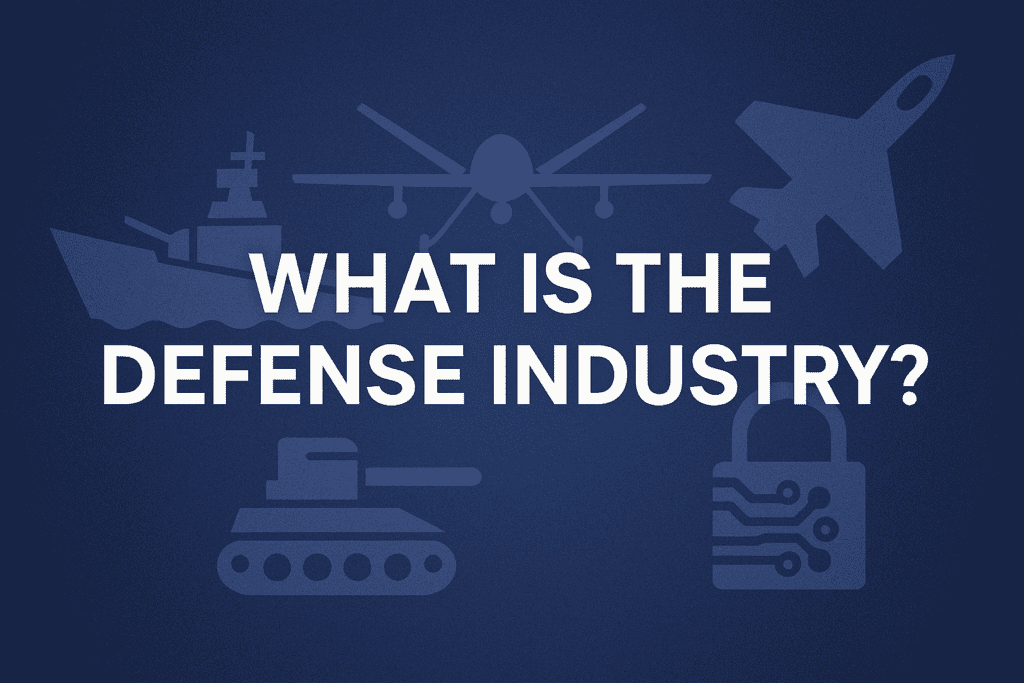
What’s Defense Industry’s Main Purpose?
The defense industry equips the armed forces of a country with the means necessary to protect the country. It equips a country or organization with the means to protect its interests and, when necessary, to engage in conflict. It supports land, naval, air and intelligence officers and other specialized units.
Who Creates All This Equipment?
Governments partner with defense companies, from global leaders to smaller firms, to make it happen. Some are private, others state-owned. Names like Lockheed Martin, BAE Systems, Baykar and Thales come to mind. Countries such as the US, China, Russia, and Turkey have thriving defense sectors that supply their own forces and export to others worldwide.
Is Defense Industry All About Weapons?
Not quite! Weapons are a key part, but the industry also spans cybersecurity solutions, radar systems, communication networks, logistics, and even artificial intelligence for battlefield support. It’s a broad field with many layers.
Military vs. Civilian Products
Here’s something interesting: some companies work in both worlds. They might build a fighter jet for a military contract and then create a commercial airliner for your next trip. For example, Boeing develops cutting-edge military aircraft such as the F-15EX, but also produces the 787 Dreamliner for international travel.
Top 20 Military Powers in 2025
| Rank | Country | PwrIndx (Global Firepower 2025) | Defense Budget (approx.) | Notable Defense Industries |
|---|---|---|---|---|
| 1 | United States | 0.0744 | $895 billion | Lockheed Martin, RTX, Northrop Grumman |
| 2 | Russia | 0.0788 | $100 billion | Rostec, Almaz-Antey, UAC |
| 3 | China | 0.0788 | $266.8 billion | Norinco, AVIC, CETC |
| 4 | India | 0.1184 | $75 billion | HAL, DRDO, Bharat Dynamics |
| 5 | South Korea | 0.1656 | $50 billion | Hanwha Aerospace, KAI |
| 6 | United Kingdom | 0.1785 | $71.5 billion | BAE Systems, Rolls-Royce |
| 7 | France | 0.1878 | $55 billion | Thales, Dassault, Naval Group |
| 8 | Japan | 0.1839 | $57 billion | Mitsubishi Heavy Industries |
| 9 | Türkiye | 0.1902 | $32 billion | ASELSAN, TUSAŞ, Baykar |
| 10 | Italy | 0.2164 | $30 billion | Leonardo, Fincantieri |
| 11 | Brazil | 0.2415 | $20 billion | Embraer, Avibras |
| 12 | Pakistan | 0.2513 | $10 billion | PAC, HIT |
| 13 | Indonesia | 0.2557 | $9 billion | PT Pindad, PT PAL |
| 14 | Germany | 0.2601 | $55 billion | Rheinmetall, Hensoldt |
| 15 | Israel | 0.2661 | $24 billion | IAI, Elbit Systems, Rafael |
| 16 | Iran | 0.3048 | $8 billion | DIO, Aerospace Industries Org. |
| 17 | Spain | 0.3242 | $18 billion | Navantia, Indra Sistemas |
| 18 | Australia | 0.3298 | $35 billion | BAE Australia, EOS Defence |
| 19 | Egypt | 0.3427 | $6 billion | AOI (Arab Org. for Ind.) |
| 20 | Ukraine | 0.3755 | $53.7 billion | Ukroboronprom, Motor Sich |
Why Defense Industry Is Important?
A strong defense industry goes beyond preparing for conflict. It boosts a nation’s independence, drives technological advances, creates jobs, and opens doors for international trade. Without a strong defense industry, it is almost impossible to have enough deterrence against rivals. Defense industry is about resilience and influence on the global stage.
What’s Next?
In our next lesson: “Who Builds Weapons? Governments, Companies, or Both?” We’ll take a closer look at the defense development process!






